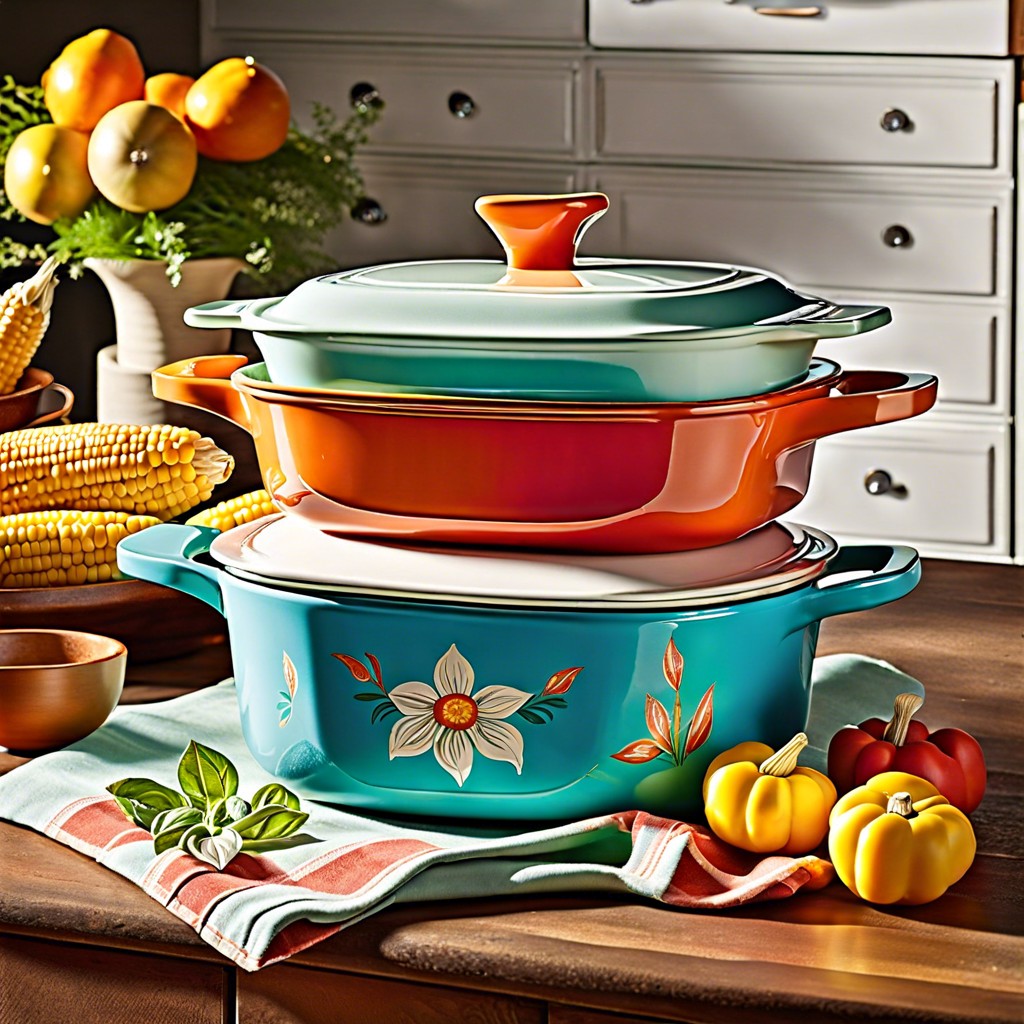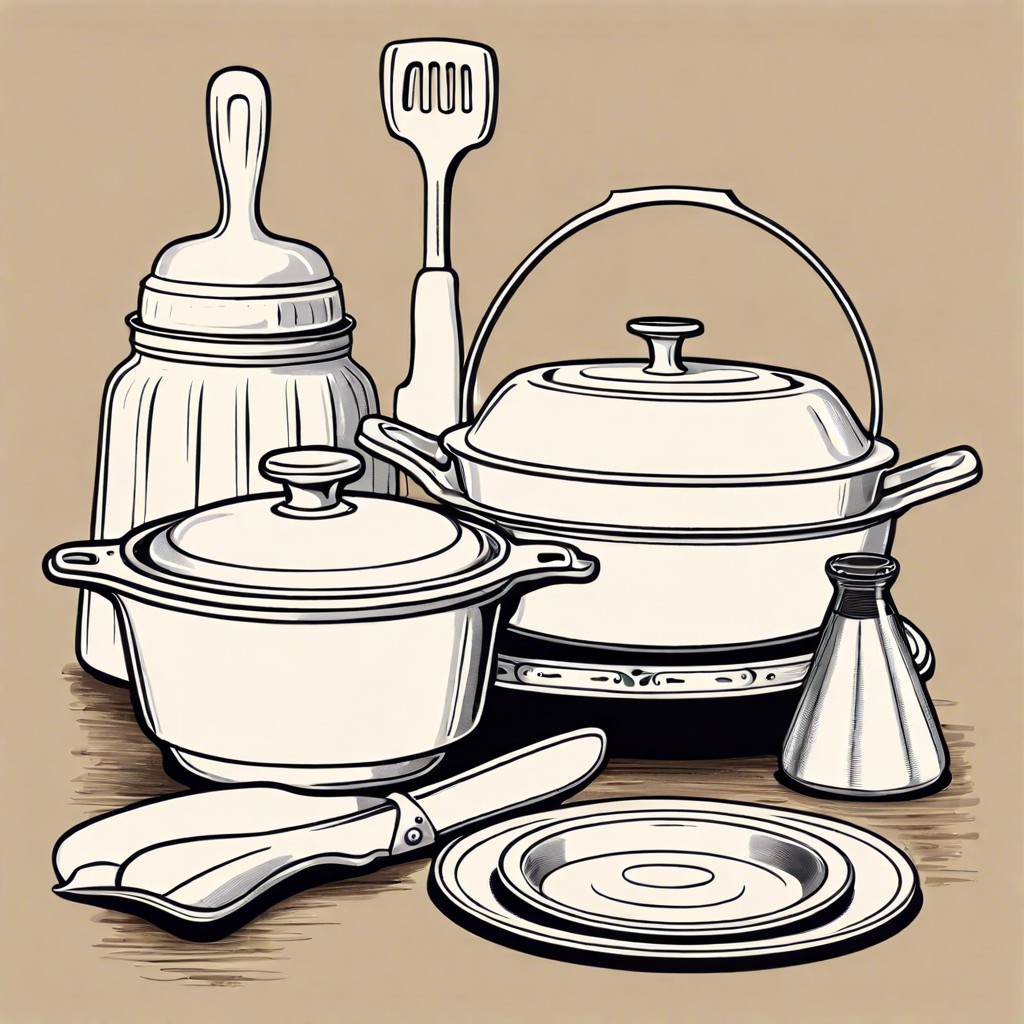Last updated on
Discover the enduring appeal of vintage CorningWare, its history, identification tips, and factors that contribute to its collectability.
Key takeaways:
- Vintage CorningWare originated in the 1950s and is prized for its durability and versatility.
- Recognize vintage CorningWare by specific patterns, stamps, and signs of age.
- Value is influenced by rarity, condition, pattern popularity, complete sets, market demand, and provenance.
- Proper care includes avoiding temperature changes, hand-washing, and storing with cushioning.
- Collecting strategies involve research, prioritizing condition, diversifying shopping avenues, staying informed on market trends, and connecting with other collectors.
History of CorningWare

CorningWare originated in the 1950s when the Corning Glass Works experimented with a unique glass-ceramic material called Pyroceram. Developed by Dr. S. Donald Stookey, this revolutionary substance could withstand sudden temperature changes, making it ideal for oven-to-table cookware. Introduced to consumers in 1958, the brand quickly became popular for its durability and versatility in the kitchen.
In the following decades, CorningWare’s product line expanded, featuring an array of patterns and designs, with the Blue Cornflower motif being the most iconic and recognizable. These pieces, often passed down through generations, are now sought after by collectors.
The initial production of CorningWare lasted until the late 1990s, when the company underwent changes, and manufacturing temporarily ceased. In the early 2000s, production resumed with new designs and materials, different from the original Pyroceram formula. However, it is the vintage items from the first era of CorningWare that continue to capture the interest of collectors and nostalgia enthusiasts.
Recognizing Vintage CorningWare

Vintage CorningWare is distinguishable by specific patterns and stamps indicative of its era of production. The earlier pieces, produced from 1958 to 1972, often featured the blue cornflower design which has become a symbol synonymous with the CorningWare brand. Later, additional patterns such as Spice of Life, with its array of vegetables, or the floral Fresh Cut pattern, were introduced in the late 1970s and 1990s, respectively.
Examine the bottom of the piece for the backstamp. Original CorningWare will typically have an embossed stamp that contains the word “CorningWare” in a distinctive font. However, the font style did change over multiple decades, providing insight into the time period of the cookware. Pieces from the 1970s onwards might display a different logo than earlier pieces.
Look out for the model number and capacity marks which are often included; this information can help verify authenticity and the exact model, which is useful for valuation. Additionally, pay attention to the lid: older CorningWare often came with Pyrex lids, which are also usually marked with a model number.
Checking for signs of age such as a slight dulling of the pattern and minor wear can also be an indicator of vintage status. However, remember that replicas and reissues are common, and these may show artificial signs of aging, so it’s essential to cross-reference multiple indicators when determining the vintage nature of CorningWare.
Factors Influencing Vintage CorningWare Value

Several elements play pivotal roles in determining the value of vintage CorningWare:
Rarity: Limited edition patterns and pieces that experienced short production runs typically command higher prices.
Condition: Items free of chips, cracks, and noticeable wear are more desirable. The presence of original lids and stamped markings can also enhance value.
Pattern Popularity: Certain designs, such as the “Blue Cornflower” or “Spice of Life” series, are more sought after by collectors and hence may carry a premium.
Complete Sets: Collections with all original components intact tend to be valued more highly than individual pieces.
Market Demand: Trends in the collectibles market can cause fluctuations in value; popular items among collectors will often sell for more.
Provenance: Pieces with a well-documented history or those that belonged to notable individuals may be deemed more valuable.
Awareness of these factors can guide both seasoned collectors and new enthusiasts in making informed decisions about their vintage CorningWare acquisitions.
Proper Care and Maintenance for Vintage CorningWare

Vintage CorningWare requires gentle handling to preserve its condition and functionality. Avoid sudden temperature changes; do not transfer pieces directly from the refrigerator to an oven. Hand-wash with a non-abrasive cleaner and a soft sponge to prevent scratching the surface. Soak in warm soapy water to loosen stuck-on food; do not use metal utensils or scouring pads. For persistent stains, a paste of baking soda and water can be applied.
Store pieces separately or with cushioning to avoid chipping. Lids, in particular, should be stored with care to prevent damage to their delicate edges. Do not attempt to repair cracks or chips, as this can affect the integrity of the piece and its value. It is important to note that while vintage CorningWare is durable, it may not meet the safety standards for use in modern high-temperature appliances such as microwave ovens. When in doubt, limit usage to serving and display purposes.
Collecting Strategies for Enthusiasts

Begin with a clear focus on the type of CorningWare that piques your interest, whether it’s a particular pattern, such as the iconic Cornflower or the rare Wildflower, or pieces from a specific era.
Research is paramount. Familiarize yourself with the marks and stamps unique to vintage CorningWare to authenticate pieces before purchasing. Books, online forums, and collector groups can be invaluable resources.
Prioritize condition. Opt for pieces without chips, cracks, or significant wear to the pattern. Complete sets or items with original lids and stands can command higher values.
Diversify shopping avenues. Explore thrift stores, estate sales, and online marketplaces. Also consider auctions, both online and in-person, which can be opportune places to find rare items.
Stay informed on market trends. Prices for vintage CorningWare fluctuate, influenced by demand and rarity. Keep abreast of these trends to better assess fair purchase prices and the right time to buy or sell.
Connect with other collectors through social media platforms and collector clubs to exchange information and sometimes even barter or buy pieces.
Practice patience. Building a noteworthy collection typically doesn’t happen overnight. Cultivate a long-term perspective, and enjoy the thrill of the hunt as part of the collecting experience.




